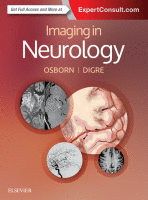Physical Address
304 North Cardinal St.
Dorchester Center, MA 02124

KEY FACTS Terminology Infarcts in multiple arterial distributions from embolic source, often cardiac origin Imaging Best imaging clue: DWI restriction in multiple vascular distributions NECT: Multiple regions of low attenuation, loss of gray-white differentiation T2/FLAIR: Multiple supratentorial and infratentorial regions…

KEY FACTS Imaging Volume loss with gliosis along affected margins Classic: Wedge-shaped area of encephalomalacia Territorial infarction Involves brain supplied by major cerebral artery Watershed infarction Involves brain between main vascular territories Lacunar infarction(s) Most common in basal ganglia/thalami, deep…

KEY FACTS Terminology Subacute infarction ~ 2-14 days following initial ischemic event Imaging Best diagnostic clue: Gyral edema and enhancement within basal ganglia and cortex Typically wedge-shaped abnormality involving gray and white matter within vascular distribution Hemorrhagic transformation of initially…

KEY FACTS Terminology Interrupted blood flow to brain resulting in cerebral ischemia/infarction with variable neurologic deficit Imaging Major artery (territorial) infarct Generally wedge-shaped; both GM and WM involved Embolic infarcts Often focal/small, at GM-WM interface NECT Hyperdense vessel = clot…

KEY FACTS Terminology Acute alteration of neurologic function due to loss of vascular integrity Imaging Best imaging MR with diffusion, perfusion, MRA MRV if MRA negative and DWI positive Can do emergent “limited” MR (FLAIR, DWI, SWI) Imaging findings CT…

KEY FACTS Terminology Hypotensive cerebral infarction (HCI) Infarction resulting from insufficient cerebral blood flow (CBF) to meet metabolic demands (low-flow state) 2 types of border zone or watershed infarcts – Border zone between major arterial territories □ Typically at cortex,…

KEY FACTS Terminology Hypoxic ischemic injury (HII): Global hypoxic ischemic injury, global anoxic injury, cerebral hypoperfusion injury Etiologies: Cardiac arrest, cerebrovascular disease, drowning, asphyxiation Imaging Injury patterns highly variable depending on brain maturity, severity, and length of insult Mild to…

KEY FACTS Terminology Vertebral artery (VA) dissection Irregularity of VA contour from intimal tear or subadventitial hematoma Imaging Stenoocclusive dissection Dissection to subintimal plane with vessel luminal narrowing or occlusion Dissecting aneurysm Dissection into subadventitial plane with dilatation of outer…

KEY FACTS Terminology Internal carotid artery (ICA) dissection (ICAD) ICAD: Tear in ICA wall allows blood to enter & delaminate wall layers Imaging Pathognomonic findings of dissection: Intimal flap or double lumen (seen in < 10%) Aneurysmal dilatation seen in…

KEY FACTS Terminology Fibromuscular dysplasia (FMD) Arterial disease of unknown etiology Overgrowth of smooth muscle, fibrous tissue Affects medium/large arteries Imaging Renal artery is most common overall site (~ 75%) Cervicocranial FMD (~ 70%) Internal carotid artery (ICA) (30-50%) >…